Business Succession Planning Canada
Business transition planning is the foundation of successfully selling your manufacturing business in Canada
You may be thinking of selling your small or medium size manufacturing company because you want to retire or pursue a different career path.
You may also wonder how to sell your manufacturing business successfully and smoothly.
Don't worry, we've got you covered. We'll explain why exit plans are crucial, how to prepare your financial documents, and what tax implications you should consider. All of this will help you create a solid exit transition strategy.
Succession planning is the key to selling your manufacturing business effectively. It will help you increase your business value, find the best potential buyers, and make sure you have everything ready when a prospective buyer conducts due diligence.
Some manufacturing company owners in Ontario attempt to create their own exit strategy. However, without prior experience in selling a business, they often face challenges with paperwork, technicalities, and getting a fair price for their manufacturing business.
Selling A Manufacturing Business Guide
Our Expert Team Will Help You Build and Maximize Your Business Value
Discover how to make your manufacturing business market-ready and take it to the next level.
This guide will help you organize your business and give you the knowledge and skills you need to succeed.
Use this guide as your secret weapon to achieve your goals and financial stability.
Manufacturing
See Guide
Business Exit Plan
If you are planning to sell your manufacturing business in Ontario, British Columbia, Edmonton, or Alberta you may need the guidance of a professional manufacturing M&A advisor. They can help you prepare a smooth and successful exit transition plan that suits your goals and needs. A manufacturing M&A advisor can assist you with various aspects of selling your business, such as identifying the required documents, conducting a financial due diligence, and finding the best buyer for your business.
A manufacturing broker can also advise you on the advantages and disadvantages of different exit strategies for your manufacturing business. Whether you want to sell your business outright, transfer it to a family member, or merge it with another company, a manufacturing M&A advisor can help you weigh your options and make an informed decision.
Having an exit transition plan is not only important for owners who want to sell their business, but also for owners who want to be prepared for any unforeseen circumstances. You never know when you might face a market downturn, a personal emergency, or an attractive offer that requires you to act quickly. Having an exit transition plan can help you navigate these situations with confidence and clarity.
One of the most important decisions that a manufacturing business owner needs to make is how to exit their business. A business exit strategy is a plan that outlines how and when an owner will sell or transfer their ownership stake in a business to another party.
There are different types of exit strategies, each with its own advantages and disadvantages. Here are some of the most common ones and their pros and cons.
Family Succession
Some manufacturing business owners may want to keep their business in the family and pass it on to a relative who can continue their legacy. This can be done by selling, gifting, or partially transferring the ownership stake to a family member. Depending on the situation, this can have tax benefits and allow the owner to stay involved in the business as an advisor, investor, or silent partner.
Pros
- Preserves the family legacy and values
- Avoids the hassle of finding external buyers
- May have tax advantages
- May allow the owner to retain some control or income from the business
Cons
- May create family conflicts or resentment
- May limit the potential sale price or valuation of the business
- May not align with the interests or skills of the successor
- May require legal and financial planning to avoid disputes
Mergers and Acquisitions For Manufacturers
Mergers and acquisitions (M&A) are common ways for businesses to grow, exit, or transform their operations. M&A can involve different scenarios and outcomes depending on the goals and strategies of the parties involved. As the name implies, this exit strategy can lead to either mergers or acquisitions.
An acquisition happens when one manufacturing business buys another one and takes over its ownership. The acquired business ceases to exist as a separate entity and becomes part of the buyer's company.
A merger occurs when two manufacturing businesses join forces to create a new company that combines their assets and capabilities. The owners of both businesses give up some of their ownership stake in exchange for shares in the new company.
A merger and acquisition together take place when two manufacturing businesses merge with or get acquired by another company in the same industry or a larger one. This can result in increased market share, economies of scale, or diversification.
Pros
- Acquiring companies may pay a premium for attractive targets
- Sellers may have the option to stay involved in the business
- Ownership transfer can be simple and straightforward in an acquisition
Cons
- Cultural clashes may arise between merging or acquiring companies
- Focusing on specific targets may limit other potential offers
- M&A deals can be complex and time-consuming to negotiate and close
Consider an “Acquihire” for Your Manufacturing Business in Canada
An acquihire is a neologism which describes the process of acquiring a company primarily to recruit its employees, rather than to gain control of its products or services. If a company needs more talent and finds another business with a strong team, it can be worthwhile to buy the personnel.
If you are thinking of selling your business and you have a robust and qualified team, you might consider an acquihire. This strategy is especially popular within technology startups, as it can be challenging to find a lot of technically qualified employees quickly.
Acquihires also most often happen between large companies and small businesses. A large company looking for an established team of qualified workers will buy out the small business and absorb the team into their ongoing operations.
Pros
- Companies often purchase “per head,” meaning small businesses can make a lot of money with a decent-size team
- Small business owners can still make a profit on a failed business with a good team
- Employees can write off bonuses as capital gains, which have lower tax rates
Cons
- There are no set rules for acquihires, which can make negotiations difficult
- Rates per head vary greatly, setting no real standard price
- Raises many potential tax questions, such as parachute payments
Management Buyout
A management buyout (MBO) is a type of acquisition where the managers of a company buy a controlling stake in the business from the current owner or shareholders. This may also be called a leveraged management buyout (LBO) if the purchase is financed with a large amount of debt.
Management buyouts are often beneficial for both sides of the deal because the managers have the expertise and skills to run the company effectively. They are already familiar with the operations, processes, and challenges of the business. They also have a vision for how to grow and improve the company.
Some advantages of management buyouts are:
- Owners can sell their company to someone they trust and respect
- Managers can gain more autonomy and rewards as owners
- The transition of ownership is smoother and less disruptive
Some disadvantages of management buyouts are:
- Negotiations can be difficult and damage existing relationships
- The process can distract managers and owners from their core duties
- The debt burden can be high and risky for the buyers
Selling The Manufacturer to a Partner or Investor
Whether you are selling your manufacturing business to a partner or an investor, you are essentially transferring the ownership of the company to someone else for your own benefit. A partner could be someone who already has a stake or a role in the business, such as an owner, a manager, or a founder. A partner could also be someone who invests money but does not get involved in the operations. An investor, on the other hand, is someone new who buys your business and may either run it themselves or hire someone else to do it.
Advantages
- You can walk away from the business with a profit and no further obligations
- Partners and investors who are interested in your business usually have good plans for its future
Disadvantages
- You lose any rights or control over the business
- Your employees and managers will have to work under new leadership
Initial Public Offering (IPO)
One way to sell a manufacturing business to the public is through an initial public offering in Canada, or IPO. This is a common exit or succession strategy for owners of successful businesses that meet certain criteria. An IPO involves selling shares of the business to investors, who can then trade them on the stock market. This can result in higher profits than other options.
However, an IPO is not easy or cheap to do. There are many rules and regulations that a business must follow to become a public company. Out of the hundreds of thousands of businesses in Canada, only about 2,589 are public.
Therefore, an IPO is not a good option for small, private manufacturing businesses that do not want to deal with the complexities and costs of going public. But, for those who can achieve it, it can be a very rewarding way to sell their business.
Pros
- IPOs increase the value and liquidity of the business
- IPOs raise more capital from the market
- Sellers can earn higher profits
Cons
- IPOs require a lot of time, money, and effort
- IPOs expose the business to more scrutiny and regulation
- IPOs are not suitable for small businesses
Liquidating the Manufacturing Business
Liquidation is an exit plan that involves selling all the physical assets of a manufacturing business. It can be done anytime, but it is usually a last resort when the business is struggling or facing bankruptcy. The money from the sale can be used to pay off debts, investors, or partners. Liquidation has some advantages and disadvantages:
Advantages
- It is simple and quick to do
- It does not require much negotiation or effort
- It does not involve transferring ownership or continuing the business
Disadvantages
- Assets lose value over time, so the owner may get less than what they paid for them
- Liquidation often occurs under bad business conditions
- Liquidated businesses may have a negative reputation
Bankruptcy
Bankruptcy is the worst option for a manufacturing business in Canada, except for liquidation. It means that the business has no future prospects and no way to pay off its debts or obligations.
There is no planning involved in this final exit strategy. The owner has probably exhausted all other alternatives and has no choice but to file for bankruptcy. This will have serious consequences for the owner and the business.
Pros
- The owner is free from all liabilities
- The owner can start a new venture
Cons
- The owner's credit rating will suffer
- The business's reputation will be damaged
- The debts are not settled.











